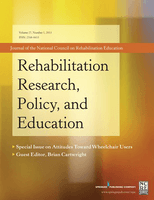
Rehabilitation Research Policy and Education
Scope & Guideline
Innovating Practices, Shaping Policies
Introduction
Aims and Scopes
- Rehabilitation Outcomes Research:
Focuses on measuring and analyzing the functional outcomes of various rehabilitation interventions, particularly for diverse populations, including individuals with disabilities and chronic conditions. - Vocational Rehabilitation and Employment:
Examines the role of vocational rehabilitation in enhancing employment outcomes for individuals with disabilities, exploring best practices, employer engagement, and innovative strategies for workforce integration. - Community-Based Rehabilitation Strategies:
Investigates the effectiveness of community-based rehabilitation programs and services, emphasizing the importance of social support, self-empowerment, and patient-centered approaches. - Policy Analysis and Advocacy:
Analyzes current policies affecting individuals with disabilities and advocates for necessary changes to improve access to rehabilitation services and promote equity. - Educational Models and Training:
Explores educational frameworks and training programs for rehabilitation professionals, focusing on integrating contemporary practices and addressing the evolving needs of clients. - Health Disparities and Intersectionality:
Studies the impact of social determinants of health and intersectionality on rehabilitation outcomes, particularly for marginalized groups.
Trending and Emerging
- Telerehabilitation and Remote Services:
The use of technology to provide rehabilitation services remotely has gained significant attention, especially in the context of the COVID-19 pandemic, emphasizing flexibility and access to care. - Mental Health and Psychosocial Support:
There is an increasing focus on the psychosocial aspects of rehabilitation, including the mental health of individuals with disabilities and the role of social support in recovery and adaptation. - Diversity, Equity, and Inclusion:
Research addressing the needs of diverse populations, including people of color and those from marginalized communities, is on the rise, highlighting the importance of culturally competent care. - Career Development for Individuals with Disabilities:
Emerging themes around vocational rehabilitation, particularly for transition-age youth and individuals with chronic illnesses, reflect a growing emphasis on career pathways and employment opportunities. - Community Engagement and Empowerment:
Studies exploring how individuals with disabilities can self-empower and engage with their communities are increasingly prominent, emphasizing the role of community in rehabilitation. - Impact of Social Determinants on Rehabilitation Outcomes:
Research is increasingly examining how social determinants of health, such as socioeconomic status and access to resources, influence rehabilitation outcomes, underscoring the need for comprehensive approaches.
Declining or Waning
- Traditional Rehabilitation Models:
Research focusing strictly on traditional rehabilitation methods is becoming less frequent, as the field shifts towards more integrative and holistic approaches that consider the overall well-being of individuals. - General Disability Awareness:
Broad discussions about disability awareness without specific focus or actionable insights have decreased, replaced by more targeted research addressing specific disabilities or demographic factors. - Physical Rehabilitation Techniques:
Studies concentrated solely on physical rehabilitation techniques are seeing reduced attention, as multidisciplinary approaches that incorporate mental health and community engagement gain traction. - Single-Disability Studies:
Research that focuses exclusively on one type of disability is waning, as there is a growing recognition of the importance of intersectionality and the need to consider the experiences of individuals with multiple disabilities.
Similar Journals
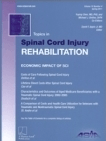
Topics in Spinal Cord Injury Rehabilitation
Elevating Standards in Spinal Cord Injury CareTopics in Spinal Cord Injury Rehabilitation is a premier journal dedicated to advancing research and clinical practices in the field of spinal cord injury rehabilitation. Published by the American Spinal Injury Association, this journal focuses on providing up-to-date insights and innovative strategies to enhance recovery and quality of life for individuals with spinal cord injuries. With an impressive trajectory from 1998 to 2024, it is recognized within the Q2 category for Neurology (clinical), Physical Therapy, Sports Therapy and Rehabilitation, and Rehabilitation as of 2023. Although the journal is not open access, it remains a critical resource for healthcare professionals and researchers, boasting a solid impact in the Scopus rankings that positions it among the top quartiles in its categories. Researchers, clinicians, and students alike will find invaluable knowledge within its pages, supporting the ongoing evolution of therapeutic approaches and rehabilitation methodologies. For subscriptions and more details, contact AMER SPINAL INJURY ASSOC at 9702 Gayton Rd, Suite 306, Richmond, VA 23238, United States.

Rehabilitation Research and Practice
Pioneering Insights in Rehabilitation Science.Rehabilitation Research and Practice is a distinguished open-access journal published by HINDAWI LTD, dedicated to advancing knowledge in the fields of rehabilitation, physical therapy, and sports therapy. With its ISSN 2090-2867 and E-ISSN 2090-2875, the journal has been a pivotal resource for researchers and practitioners since its inception in 2010. Based in Egypt and reaching an international audience, the journal encapsulates cutting-edge research and evidence-based practices that significantly contribute to patient care and rehabilitation strategies. Notably, it holds a reputable position in the Scopus rankings—42nd out of 161 in Medicine Rehabilitation and 74th out of 247 in Health Professions. The journal enjoys a Q2 status in the 2023 category quartiles, reflecting its influence and quality within the academic community. The journal's commitment to an open-access format not only enhances its visibility and accessibility but also fosters collaboration among professionals, making it an indispensable resource for anyone engaged in rehabilitation research and practice.

Archives of Rehabilitation Research and Clinical Translation
Unlocking Potential: Research That Transforms RehabilitationArchives of Rehabilitation Research and Clinical Translation, published by ELSEVIER, is a leading open access journal dedicated to advancing the field of rehabilitation research and clinical practice. Since its inception in 2019, the journal has made significant contributions to the understanding of rehabilitation methodologies and interventions, showcasing innovative research that bridges the gap between clinical practices and rehabilitation science. With an impressive impact factor and essential Scopus rankings—#56 in Rehabilitation Medicine and #94 in Physical Therapy—this journal is highly regarded in its fields and reaches a diverse international audience. The open access format promotes widespread dissemination of scholarly work, ensuring that vital research findings are accessible to all practitioners, researchers, and students worldwide. As a trusted platform for high-quality research, the journal encourages rigorous scientific exploration and fosters collaboration among professionals striving to improve the quality of rehabilitation services.
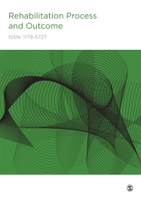
Rehabilitation Process and Outcome
Fostering dialogue for improved health outcomes.Rehabilitation Process and Outcome, published by SAGE Publications Ltd, is a premier peer-reviewed journal dedicated to advancing the field of rehabilitation science. With an ISSN of 1179-5727 and an E-ISSN of 1179-5727, this open-access journal has been committed to disseminating high-quality research since its inception in 2008. The journal provides a vital platform for researchers, clinicians, and practitioners to share innovative studies, clinical practices, and advancements in rehabilitation methodologies. Its emphasis on open access ensures that findings are readily available to a global audience, promoting collaboration and knowledge exchange in the rehabilitation community. Rainier emphasis on practical outcomes supports the journal's mission to enhance patient care and recovery processes. Based in London, England, Rehabilitation Process and Outcome continues to foster significant discourse in the rehabilitation sector, making it an essential resource for those involved in enhancing recovery strategies and overall health outcomes.
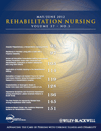
Rehabilitation Nursing
Shaping the future of rehabilitation through scholarly excellence.Rehabilitation Nursing, published by Lippincott Williams & Wilkins, is an esteemed journal dedicated to advancing the fields of rehabilitation, nursing, and physical therapy. With an ISSN of 0278-4807 and an E-ISSN of 2048-7940, this journal has been a crucial resource for practitioners and researchers since its inception in 1975, continuously providing insights through its convergence of scholarship up to 2024. As a member of the Q3 category in multiple disciplines, including Medicine (Miscellaneous), Nursing (Miscellaneous), and Physical Therapy, the journal affirms its relevance within the academic community, particularly highlighted by its Scopus rankings. With a focus on disseminating innovative research, clinical findings, and evidence-based practices, Rehabilitation Nursing aims to enhance patient care and foster improvements in rehabilitation strategies. Whether one seeks to stay abreast of the latest developments or contribute new insights, this journal is a must-read for those involved in the fields of rehabilitation and nursing.

Advances in Rehabilitation Science and Practice
Innovating Rehabilitation: Where Science Meets PracticeAdvances in Rehabilitation Science and Practice is a pioneering journal published by SAGE Publications Ltd., dedicated to advancing the field of rehabilitation science through rigorous research and innovative practice. With the ISSN 2753-6351, this peer-reviewed Open Access journal facilitates the dissemination of knowledge essential for rehabilitation professionals, clinicians, and academicians. It aims to provide a comprehensive platform for studies that explore new methodologies, interventions, and outcome measures in rehabilitation settings. The journal plays a crucial role in bridging the gap between research and practice, fostering collaboration among researchers, healthcare practitioners, and policy-makers to improve patient outcomes across various rehabilitation disciplines. By offering unrestricted access to high-quality research, Advances in Rehabilitation Science and Practice not only enhances visibility for authors but also encourages a global exchange of ideas in this critical area of health science.

Journal of Vocational Rehabilitation
Transforming Lives with Evidence-Based PracticesJournal of Vocational Rehabilitation is a leading academic journal published by IOS PRESS, focusing on the critical intersection of vocational rehabilitation and occupational therapy. With an ISSN of 1052-2263 and an E-ISSN of 1878-6316, this esteemed journal has been committed to advancing knowledge in this essential field since its inception in 1991. Located in the Netherlands, the journal is recognized for its impact, holding a Q2 rank in Occupational Therapy and a Q3 rank in Rehabilitation as of 2023. The Journal of Vocational Rehabilitation serves as a vital resource for researchers, professionals, and students alike, facilitating the dissemination of innovative research, evidence-based practices, and comprehensive reviews that drive progress in vocational rehabilitation. Through its rigorous peer-review process, the journal ensures high-quality publications, making it a cornerstone for those seeking to enhance their understanding and application of vocational rehabilitation principles.

International Journal of Therapy and Rehabilitation
Empowering Practitioners Through Cutting-Edge ResearchInternational Journal of Therapy and Rehabilitation (ISSN: 1741-1645; E-ISSN: 1759-779X), published by MA HEALTHCARE LTD, is a premier platform for disseminating innovative research and clinical practices in the fields of physical therapy, sports therapy, and rehabilitation. As an influential contributor to the academic discourse in rehabilitation, this journal holds a notable impact factor and is recognized in the Q4 category in Physical Therapy, Sports Therapy and Rehabilitation and Q3 in Rehabilitation as of 2023. With rankings of #112 out of 161 and #190 out of 247 in Scopus, respectively, it remains committed to publishing high-quality research that addresses both the fundamental and contemporary challenges in therapy and rehabilitation. While the journal does not offer open access, it strives to present content that is highly relevant and impactful for practitioners, researchers, and students in the healthcare community. The journal's scope, spanning from 1996 to 2024, reflects its dedication to reflecting the evolving nature of therapy and rehabilitation practices globally.

JOURNAL OF OCCUPATIONAL REHABILITATION
Elevating standards in rehabilitation practices.JOURNAL OF OCCUPATIONAL REHABILITATION, published by SPRINGER/PLENUM PUBLISHERS, is a leading journal in the fields of occupational therapy and rehabilitation. With an impressive impact factor and ranked in the Q1 category for both Occupational Therapy and Rehabilitation, this journal serves as a vital platform for researchers, practitioners, and educators to disseminate high-quality research findings, innovative practices, and theoretical advancements. Since its inception in 1991, the journal has continually evolved, reflecting the dynamic nature of the field and addressing critical challenges faced by health professionals. The journal is committed to promoting evidence-based approaches in occupational rehabilitation, fostering interdisciplinary collaboration, and enhancing the effectiveness of rehabilitation services. The ISSN for print submissions is 1053-0487, while the E-ISSN for electronic content is 1573-3688. With its strategic positioning in the top tiers of health professions and rehabilitation rankings on Scopus, the JOURNAL OF OCCUPATIONAL REHABILITATION is an essential resource for those seeking to advance their knowledge and impact practice in this critical area of healthcare.
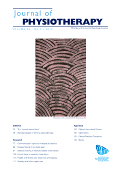
Journal of Physiotherapy
Exploring Cutting-Edge Techniques in PhysiotherapyThe Journal of Physiotherapy, published by the Australian Physiotherapy Association, is a leading peer-reviewed journal dedicated to advancing the field of physical therapy, sports therapy, and rehabilitation. With a stellar impact factor and ranked Q1 in the 2023 category of Physical Therapy, this journal serves as an essential resource for researchers, clinicians, and educators alike. Located in Australia, it features open access options that allow global dissemination of knowledge, enhancing the visibility of cutting-edge research from 2010 to 2024. With a commendable Scopus Rank of #5 out of 247 in its field, achieving the 98th percentile, the Journal of Physiotherapy is committed to enriching the evidence base within the profession and promoting best practices in physiotherapy. Whether you are searching for the latest clinical studies, innovative treatments, or comprehensive reviews, this journal provides a platform for high-quality scholarship that drives the profession forward.